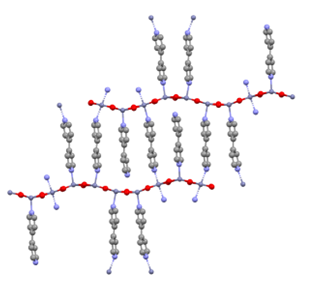
The crystal packing of JEZRUB viewing along c axis

The crystal packing of heated JEZRUB viewing along c axis
Case study: The study of the Structural transformation of Zinc-based MOFs
In this case study, we explored the structural transformation of Zinc-based MOFs (JEZRUB) , induced by heating. The original structure of JEZRUB has octahedrally coordinated zinc, with two water molecules. After heating, the resultant material exhibits a different PXRD pattern, indicating a structural transformation. Despite employing computational predictions and X-ray studies, the structure of the resultant material remains undetermined. To cope with the challenge posed by the crystal size, three-dimensional Electron Diffraction (3D ED) was employed to elucidate the structure of the resulting sample and gain insights into the mechanism underlying the structural transformation.
The Lacey carbon supported copper TEM grid underwent an initial glow discharge for 60 seconds to enhance the hydrophilicity of the carbon film (PELCO easiGLOW, 20 mA). Subsequently, the sample was suspended in acetone, and a droplet of the suspension was deposited onto the prepared grid.
For 3D Electron Diffraction (3D ED) data collection, a JEOL JEM-2100 LaB6 TEM operating at 200 kV was utilized, equipped with a fast Timepix hybrid pixel detector (512 x 512 pixels, Amsterdam Scientific Instruments). The sample crystal was continuously rotated under the electron beam control using Instamatic software. Data collection was conducted using a single tilt holder at room temperature.
cRED data show that the resultant material is orthorhombic with the unit cell parameters of a = 23.29Å, b = 26.62 Å, and c = 21.77Å. ). The space group is Fd2d (No. 43) based on the observed reflection conditions. Based on the solved structure, the structural transformation of JEZRUB induced by heating is confirmed clearly.
